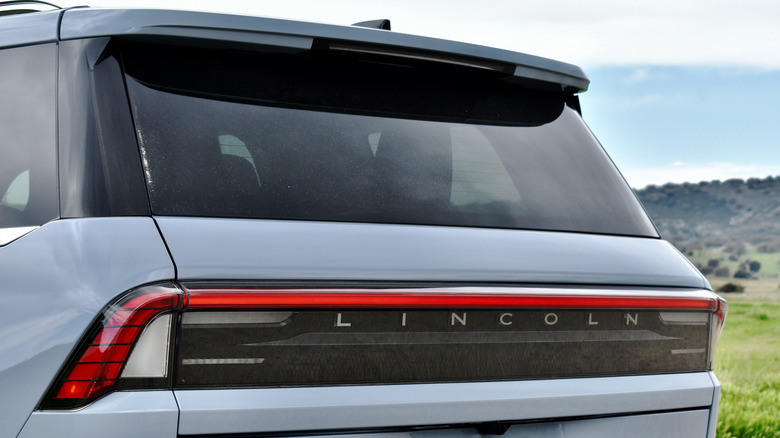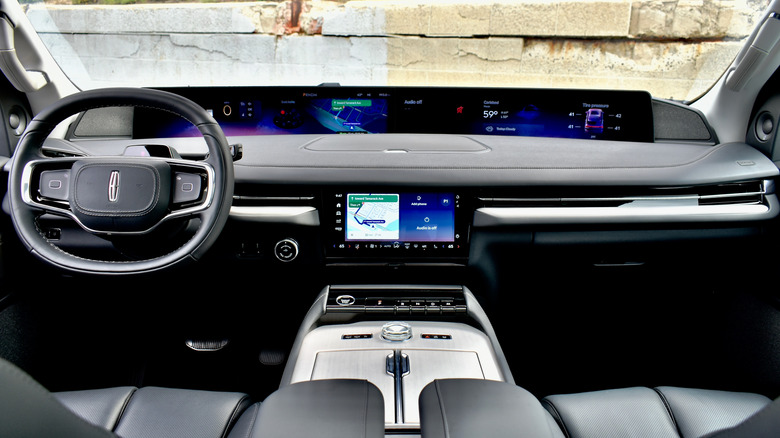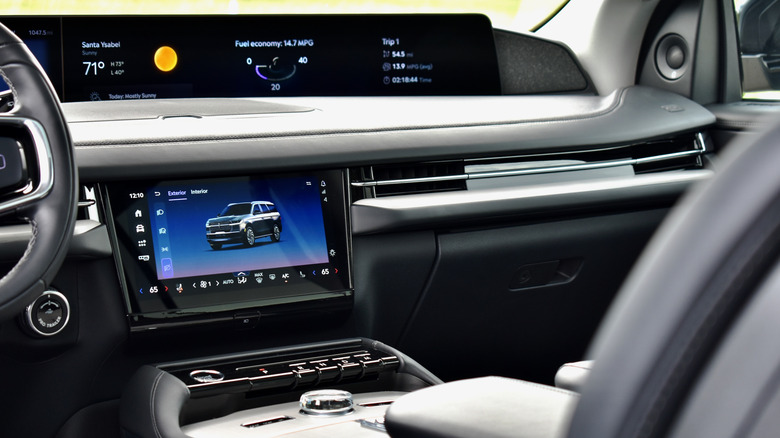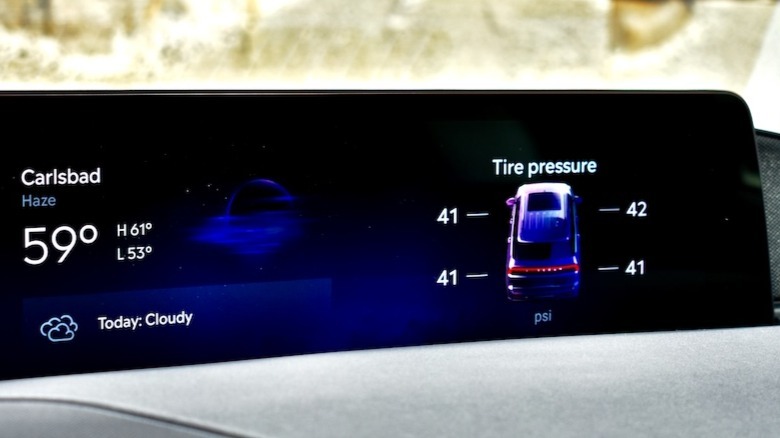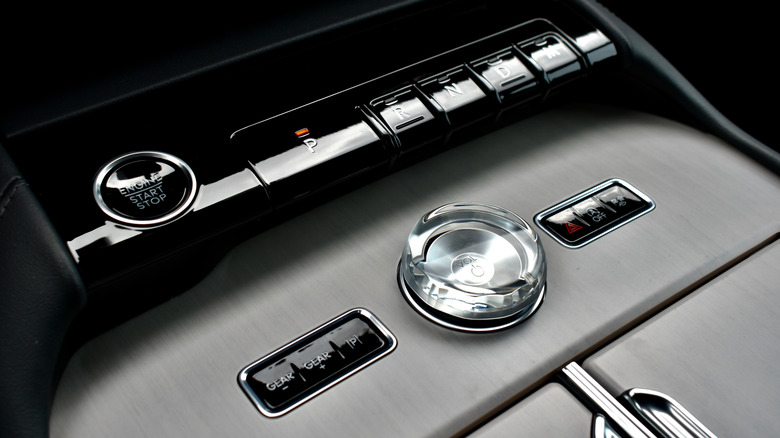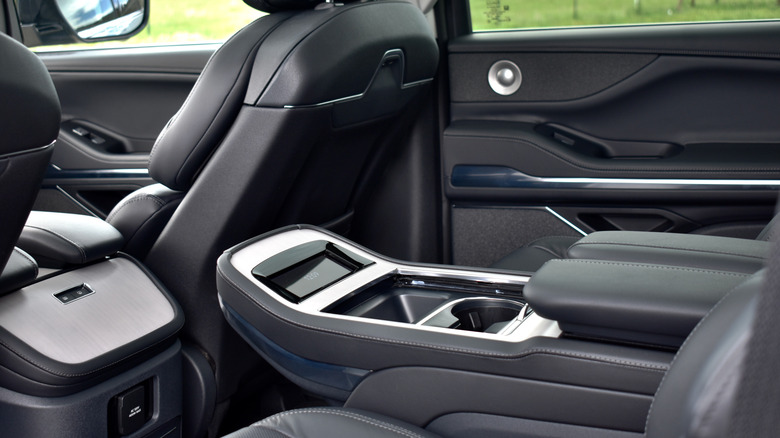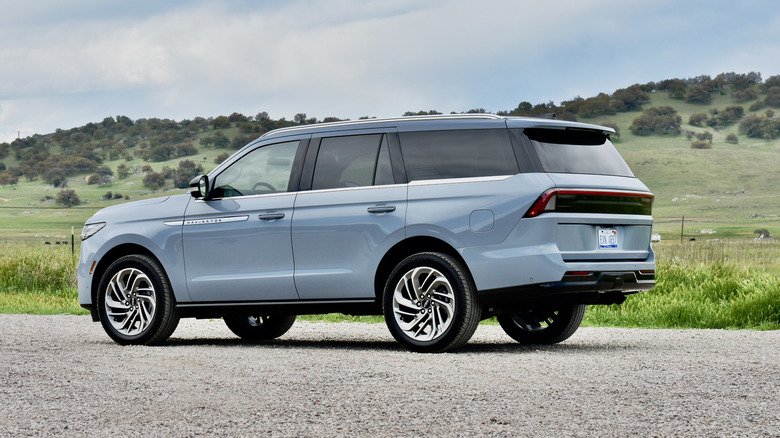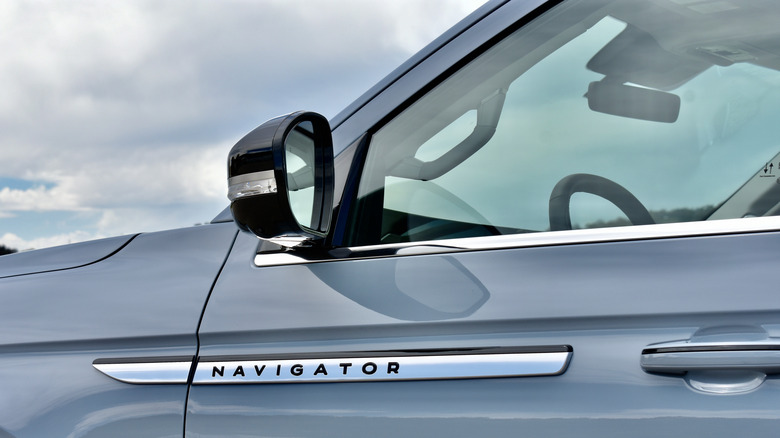Since its Midcentury Modern heyday, Ford’s Lincoln luxury brand has rarely been a trendsetter. But the product planners certainly got it right with the 1998 introduction of the Lincoln Navigator, which ushered in the age of enormous, full-size luxury SUVs.
Advertisement
To make the Navigator, Lincoln takes a Ford Expedition—itself derived from the F-150 pickup truck—and adds some luxury trappings. That may not seem like an enduring formula, but it spawned rivals in the form of the Cadillac Escalade and Infiniti QX80, cajoled BMW and Mercedes-Benz into creating bigger SUVs like the X7 and GLS-Class, respectively, and has served Lincoln well through four generations of Navigator.
The redesigned 2025 Lincoln Navigator hopes to keep that streak going for a fifth generation, applying Lincoln’s latest design language and tech features—previously seen in the smaller Nautilus—to a bigger canvas.
Still big, bold, and brawny
The combination of full-size SUV proportions and the less-than-subtle styling features that have been Lincoln’s default since the latter half of the 20th century always gave the Navigator lots of presence, and that’s also true of the 2025 model. But what’s really notable is how Lincoln combined styling elements from the latest Nautilus with the underlying structure of the new Ford Expedition.
Advertisement
Up front is a squarer version of the Nautilus grille, with horizontal bars connecting the centered Lincoln logo to the headlights. Base Reserve models have an illuminated Lincoln logo, but the connecting bars are also illuminated on Black Label models. During the day, this makes the Navigator look a bit like it’s wearing a night brace, but when the sun goes down all you can see is a visor-like light pattern across the front of the car, with winged corners formed by the headlights.
The Navigator shares its body shell and doors with the Expedition, along with a split tailgate that’s new for 2025. This is a great choice in terms of function, but less so in terms of form, as it seems to have given designers too much of a challenge when integrating the taillights. The continuous taillight bar looks classy on its own, but zoom out and it hangs awkwardly off the back of the tailgate.
Advertisement
Practical luxury
Already a feature on the BMW X7 and Land Rover Range Rover, a split tailgate is a useful addition to the Navigator, though. Leaving the lower portion up ensures groceries won’t tumble out after being jostled around during a drive. When opened, that part can serve as a bench for tailgating parties. Lincoln also provides a folding table for that purpose, which can be reconfigured as a back rest for those seated on the tailgate, plus an underfloor storage compartment (a full-size spare tire is slung underneath the vehicle).
Advertisement
Second- and third-row legroom improve over the previous-generation Navigator, but that comes at the expense of first-row legroom. Headroom in the first two rows is also slightly less than before, but this is still a massive, spacious SUV. The Navigator also has more third-row legroom than the similarly-sized Cadillac Escalade and Infiniti QX80.
Cargo space also grows compared to the 2024 model, and Lincoln continues to offer a long-wheelbase Navigator L with even more of it. But the Cadillac Escalade—in both its standard and elongated ESV forms—offers still more space.
When it comes to towing, though, the Navigator beats its crosstown rival—and pretty much every other luxury SUV. With an optional Heavy Duty Trailer Tow Package, the Lincoln can lug up to 8,700 pounds. That rating applies to both the standard-wheelbase and long-wheelbase versions, as long as you stick with the base 22-inch wheels.
Advertisement
Dramatic display, luxurious details
The Navigator’s truck-like exterior and capability belie its interior, which is designed around the Lincoln Digital Experience panoramic display first seen in the Nautilus. The 48-inch display extends from door to door, and is controlled by an 11.1-inch touchscreen in the typical location on the center stack.
Advertisement
The display dictates a small, square steering wheel which, combined with the soft details of the rest of the cabin, gave more of a traditional luxury-car feel than the exterior design. Slim vents are almost hidden in the dashboard, and the door armrests and speaker grilles blend together in wing-like forms. Lincoln also retained its piano-key shift buttons, which both look distinctive and save space, although it’s easy to mistake the large crystal volume knob for the shifter. And for those who don’t like new car smell, Lincoln offers several “Digital Scents” that can be diffused throughout the cabin.
Individual second-row seats with a larger center console are standard, but they can be substituted for a 40/20/40 split-folding bench, making the Navigator an eight-seater. A second-row console with its own 5.8-inch touchscreen is standard, along with a power tilt-and-slide function that makes access to the third row easier.
Advertisement
Massaging seats are also available for the first and second row, with 24-way and 22-way power adjustability for the driver and front passenger, respectively. That made it easy to get comfortable (Lincoln’s Perfect Position branding is apt), although the seats themselves felt a bit narrow, considering the amount of space available.
Tedious interface
As with the Nautilus, the Lincoln Digital Experience is first and foremost a different way to arrive at the same place, functionality-wise. But the Navigator’s array of features seemed to push this interface to its practical limits.
Advertisement
Positives include Lincoln’s incorporation of Google Built-in apps while retaining standard wireless Apple CarPlay and Android Auto, as well as the positioning and layout of the main display. It’s easy to see everything while keeping the road ahead in view—much more so than with other infotainment systems based around multiple individual screens—and spreading everything out means graphics are easy to find. The speedometer is in an uncluttered area directly in front to the driver, navigation and audio are in the middle, and secondary information like weather and fuel economy is delegated to three programmable widgets on the passenger’s side of the dash.
However, the dashboard-spanning display is just that. Steering-wheel touchpads and the smaller touchscreen handle nearly all actual control functions. Mirrors, pedals, and steering-wheel position are all adjusted through the touchpads, which is only acceptable because most drivers probably won’t be changing those settings very often. A laundry list of other functions—from turning on the headlights to folding the third row—are contained within the touchscreen. Finding them was far from the effortless experience one should expect in a luxury vehicle, too. Lincoln installed a big display screen so drivers wouldn’t have to look down at a touchscreen, but we found ourselves doing that a lot.
Advertisement
Relaxation station
The lack of physical controls is an unfortunate part of the high-tech automotive aesthetic, and so is Lincoln’s interest in devising software-based features for its vehicles. One of them is Lincoln Rejuvenate, a relaxation program that utilizes the screens, Digital Scent perfume spritzer, seat adjustments, and audio system (a 28-speaker Revel Ultima system is standard) to affect a calming ambience.
Advertisement
Lincoln Rejuvenate is also available on the Nautilus, but when we first drove that smaller SUV last year it wasn’t quite ready. The finished version feels like sitting in a fragrance ad, albeit one you can actually smell, thanks to the scent diffusion. The cabin fills with generic-yet-inoffensive images and sounds, which you experience while being massaged in a reclined driver’s seat (the feature only works while parked) in five-minute or 10-minute programs.
This all feels a little strange (especially with a Lincoln representative in the passenger’s seat next to you), but Lincoln claims it’s something customers want. The results of a survey commissioned by the automaker show that 87% of Americans use their cars as a place to get some alone time, and Lincoln Rejuvenate is designed to enhance that—as long as drivers don’t indulge while parked in a garage, as the engine must be running. Too bad Lincoln still doesn’t offer any EVs.
Advertisement
Smooth power
At the Navigator’s media introduction, Lincoln’s public relations representatives and subject matter experts barely mentioned the powertrain. Admittedly, that might be because not much has changed from the previous generation. The Navigator still shares a twin-turbocharged 3.5-liter V6 with the Ford Expedition and F-150 pickup truck, here producing 440 horsepower and 510 pound-feet of torque. The engine is again coupled to a 10-speed automatic transmission with standard four-wheel drive (a two-speed transfer case is included with the Heavy Duty Trailer Tow Package).
Advertisement
Lincoln hasn’t offered a V8 engine in the Navigator for about a decade, but judging by the fact that the 2025 Navigator still pipes fake V8 noises into its cabin, customers apparently haven’t moved on. Its aural qualities may be lacking, but the twin-turbo V6 is otherwise a great V8 substitute. An ample supply of torque helps move the Navigator with as much urgency as one can expect in such a big SUV, helped by a seamless transmission that imperceptibly moves between its many gears.
When it comes to fuel economy, the V6 is too much like a V8. Gas mileage would probably be worse with a bigger engine, but the 2025 Navigator’s EPA-rated 17 mpg combined (15 mpg city, 22 mpg highway) is decidedly not great. Nor is it much of an improvement over a V8-powered Cadillac Escalade, rated at 16 mpg combined (14 mpg city, 18 mpg highway). The Escalade was previously offered with a more-efficient diesel engine, but it’s no longer available.
Advertisement
Dynamically limited
Like other big, body-on-frame SUVs, the Navigator’s luxury façade starts to crack when you reach a bumpy road, or one with some corners.
In steady-state cruising on smooth pavement, the experience from the driver’s seat or the rear seats is as quiet and serene as the traditional sedans the Navigator long ago replaced in Lincoln’s lineup. But expansion joints and other imperfections will still send shivers through the structure. Like its predecessor, the Navigator is one of the best-riding body-on-frame vehicles, but the relative lack of rigidity from its separate body and frame still leaves it at a disadvantage.
Advertisement
That truck-like construction and the Navigator’s sheer size preclude graceful handling, but it was at least easy to be smooth, minimizing body roll and head toss. Uber drivers won’t have trouble earning five-star ratings in this, as long as they master the tricky brake pedal, which proved difficult to modulate.
In highway driving, touching the pedals—and steering wheel—is optional thanks to the BlueCruise driver-assist system. The 2025 Navigator ships with the latest BlueCruise 1.4 version, as in the latest F-150, which includes automated lane-change capability and an improved interface with clearer messaging as well as how-to videos that play right on the dashboard. With version 1.4, a message pops up when BlueCruise is available, and the system can then be activated at the press of a button. Once activated, BlueCruise performed without issues during this test drive.
Advertisement
2025 Lincoln Navigator Verdict
The Navigator is Lincoln’s de facto flagship, and that’s reflected in pricing that starts at $101,990 for the Reserve trim level and $118,490 for the Black Label. The long-wheelbase Navigator L costs about $3,000 more in either spec.
Advertisement
That makes the Infiniti QX80, which starts at $87,545 with four-wheel drive, look like a bargain. Also redesigned for 2025, the QX80 shares many of the Navigator’s pros and cons. Its bold styling and tech-forward interior are balanced by a truck-like ride and handling. The same can also be said of the Cadillac Escalade, which starts at $93,295 in refreshed 2025-model-year form.
German alternatives in the form of the BMW X7 and Mercedes-Benz GLS-Class have less space, but far better on-road driving dynamics, and with lower base prices than the Lincoln. You’ll likely spend more on a Range Rover (assuming tariffs don’t make them disappear) but will get a combination of on-road poise, off-road capability, and prestige that’s hard to match.
Advertisement
For many new car buyers, though, bigger is better—and the Navigator certainly delivers that. The latest model’s combination of old-school construction with trendy tech is more puzzling than charming, however. The tech features that are the main news here don’t detract from the experience of what is still a well-executed full-size SUV, but they don’t add to it either.




